Tribes And Festivals
Tribes And Festivals
Angami
Sekrenyi (also known as Phousanyi) is the main festival of the Angami Naga community, primarily celebrated by the Southern Angamis in December and by the Western and Northern Angamis in February. Today, it is commonly observed by all Angamis on February 25th. Sekrenyi marks the beginning of the lunar year and is a time for praying for prosperity and abundance. The festival is seen as a process of purification for both body and soul, helping participants renew and make themselves holy.
Traditionally, Sekrenyi marks the transition from boyhood to adulthood, particularly for young men. The festival is filled with feasting, singing, and displays of cultural attire and adornments. One key part of the celebration is Thekra Hie, during which village youth gather in peer groups to enjoy rice beer and meat, while singing traditional songs.
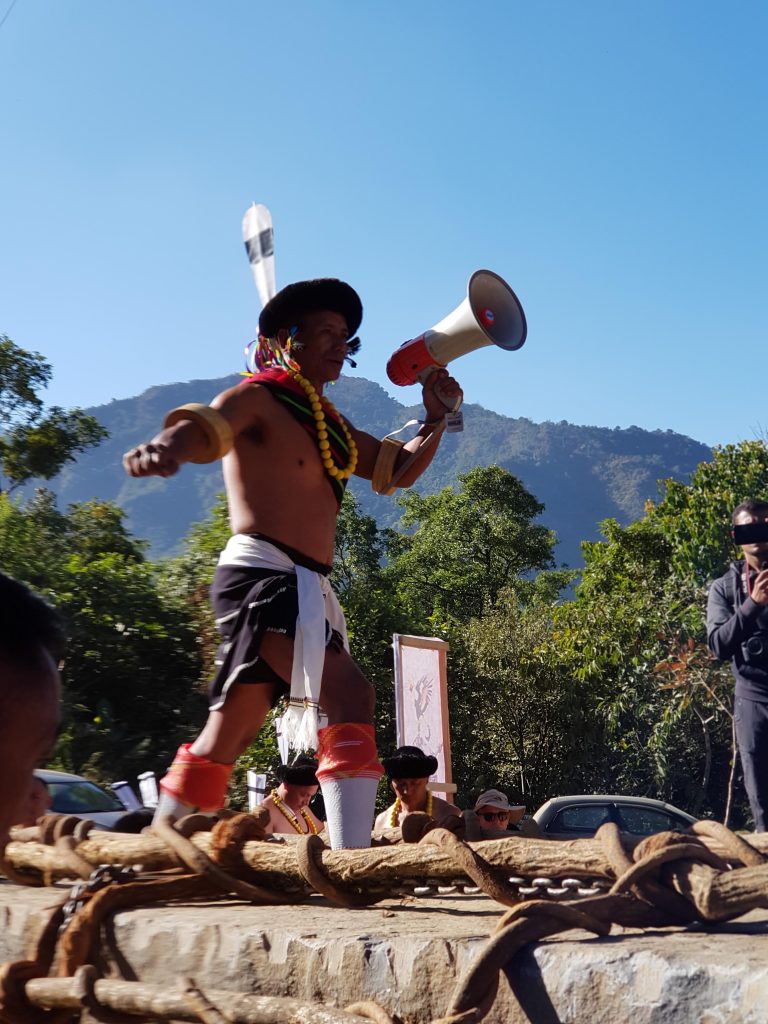
Rituals performed during Sekrenyi include Kizie, Zumho, and Dzuseva, which are aimed at purification. Participants also wear new shawls called mhoushü and Lohe. Major events such as hunting, gate-pulling (Kharu), bridge-pulling (Pe), and inter-village ceremonies (Kidakinyi, vitho) take place in the later part of the festival. During this time, villagers abstain from agricultural work, known as penyie.
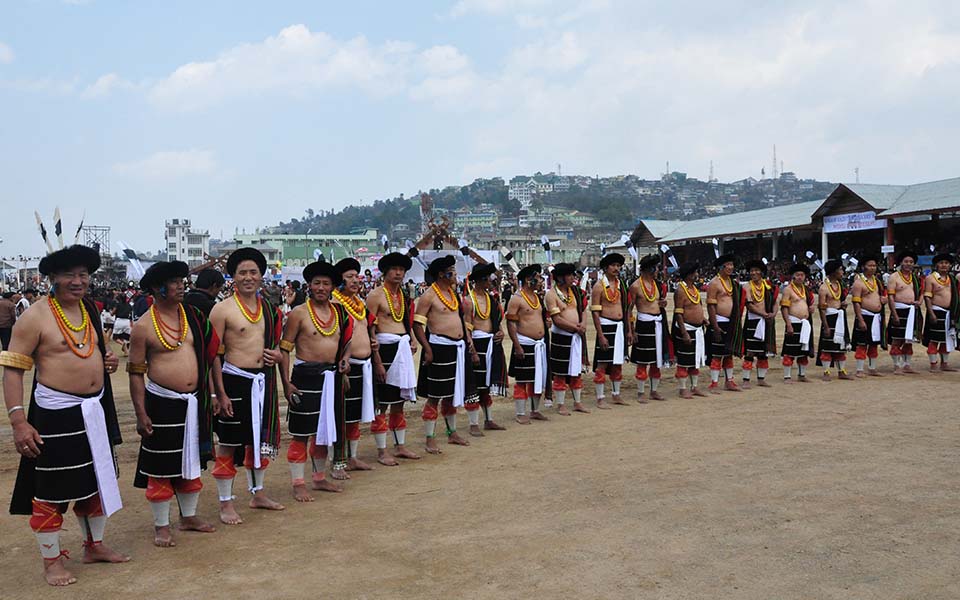
Ao
Moatsü festival is celebrated by the Ao Naga tribes of Nagaland annually in the first week of May. The festival marks the culmination of the sowing season and aims for a prosperous harvest. Various traditions like, communal feasts, traditional sports and games, cultural performances, bonfires are performed. While rituals performed during Moatsü includes repairs and construction of houses by elders of the PutuMenden(Village Council), ploughing of old and New Jhum Kheti, and cleaning up the Tzübu(Water Wells).
The festival brings people together, provides an opportunity for family members and villagers to share experiences and celebrate their cultural identity fostering community bonding.
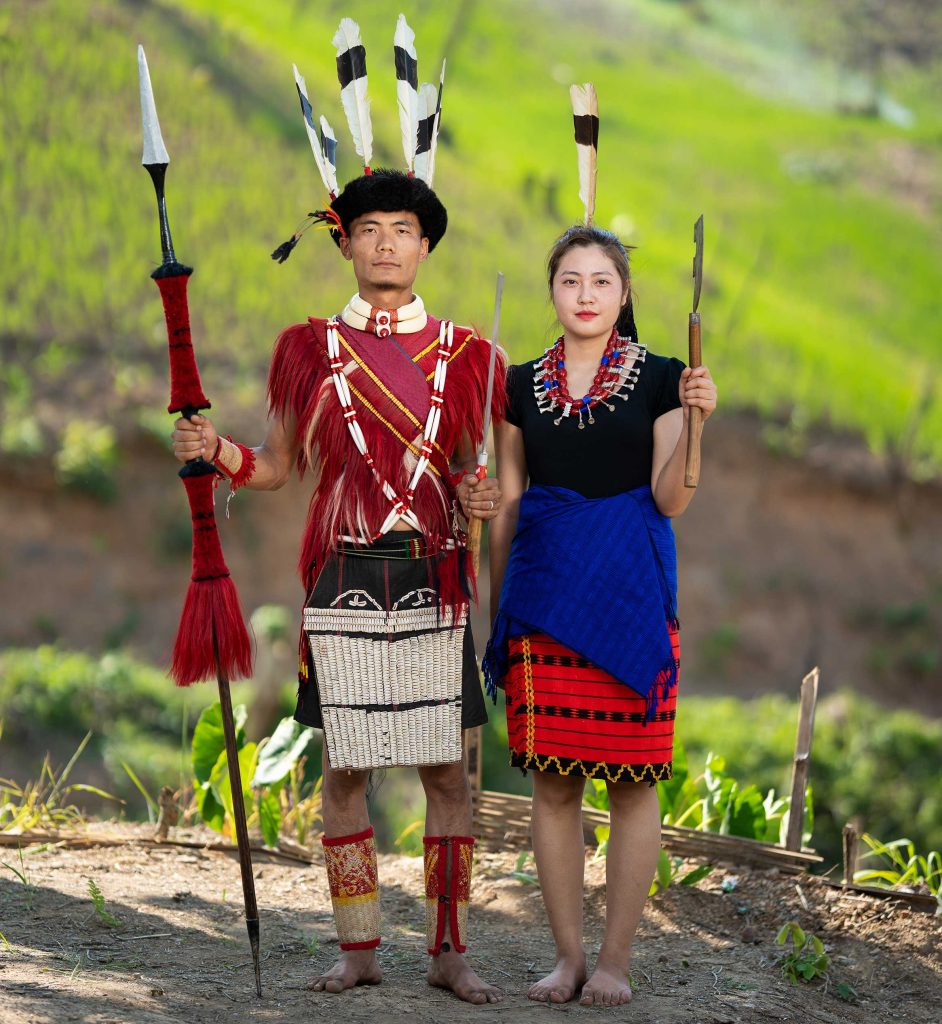
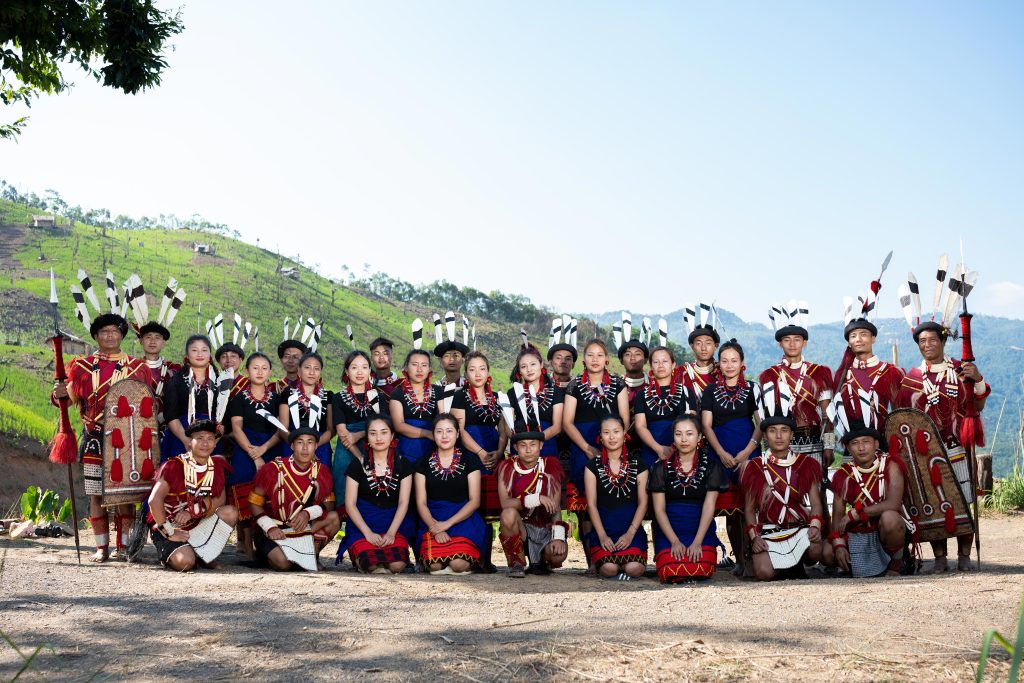
Chakhesang
A new year of activities begins with the arrival of spring; all activities related to sports and entertainment that began after the harvest, cease along with the Tsukhenye festival. The festival lasts for four days – on the first morning, the village
priest sacrifices the first rooster that crows. The men folk purify themselves by bathing in a designated well where no women are allowed. After bathing, they invoke the Almighty for strength, long life, good harvest etc During Sukrenye, considered as the most important Chakhesang festival, the boys and girls are consecrated through religious ceremonies and rituals. Sükrunyi is celebrated over a total of eleven days.
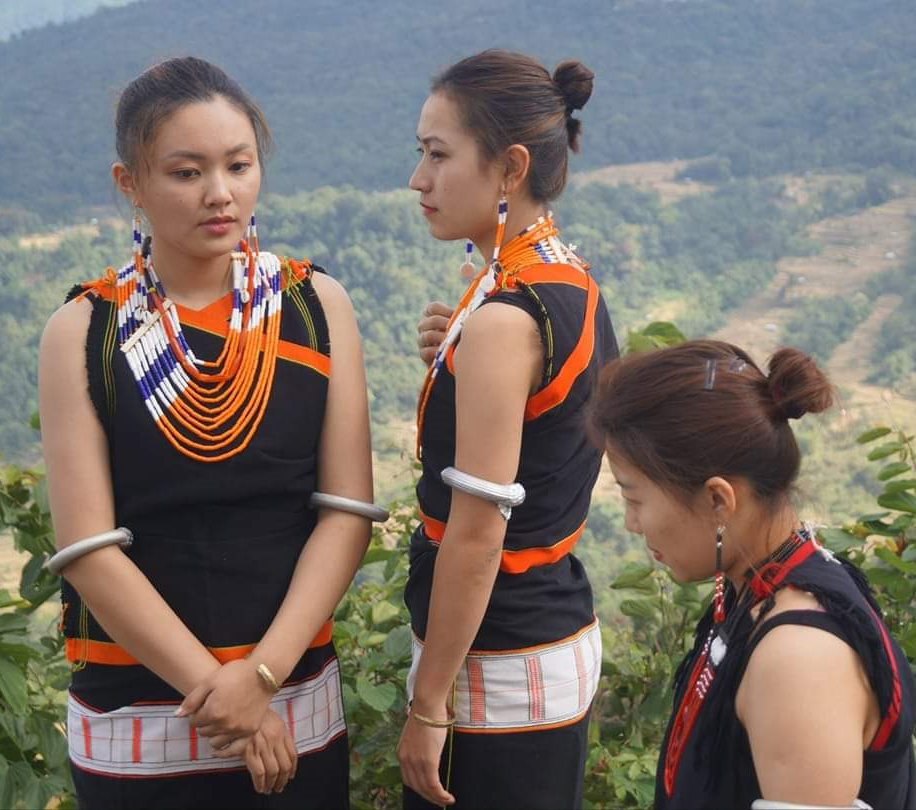
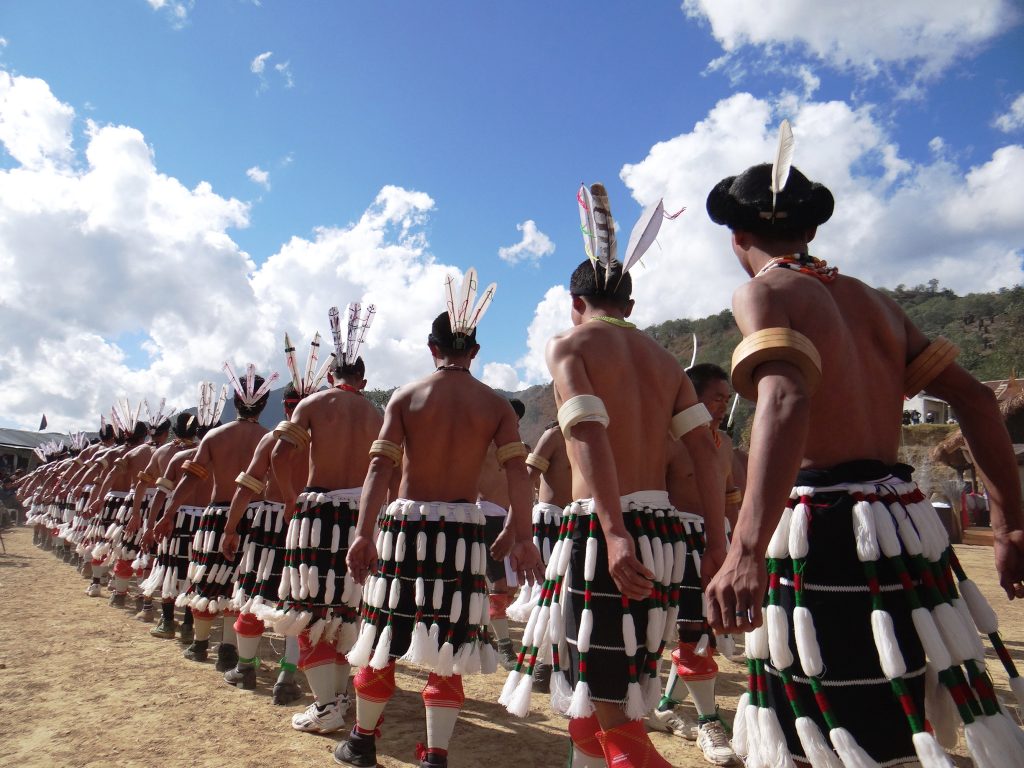
Chang
Naknyulüm: The word Naknyu literally means “Mother of darkness” and lüm means “festival”. It is said that the whole world was covered in darkness for six days and six nights, because of the darkness people couldn’t go out farming,collecting firewoods, fetching waters and to their jhum fields . This festival is celebrated during “Daomao” refered in Chang dialect which translates to when the moon is fully concealed. The festival is celebrated honouring the victory of light over darkness and with great enthusiasm,joy and excitement the festival is celebrated among the Chang’s both young and old alike.
It is celebrated for three complete days each day having its own significance and symbolism.
The first day is called “Wenshi” whereby the women folks grind pearl millets “jei” till it is turned into flour, the flour is then packed using phrynium pubinerve “lemün” in Chang dialect, into steam biscuits and in that particular day the men folks go to the fields or jungles to collect a scented plant known as “Ngounam” and plant it all around the house, at the gates and at the door frames believing it to ward off evils and sickness.
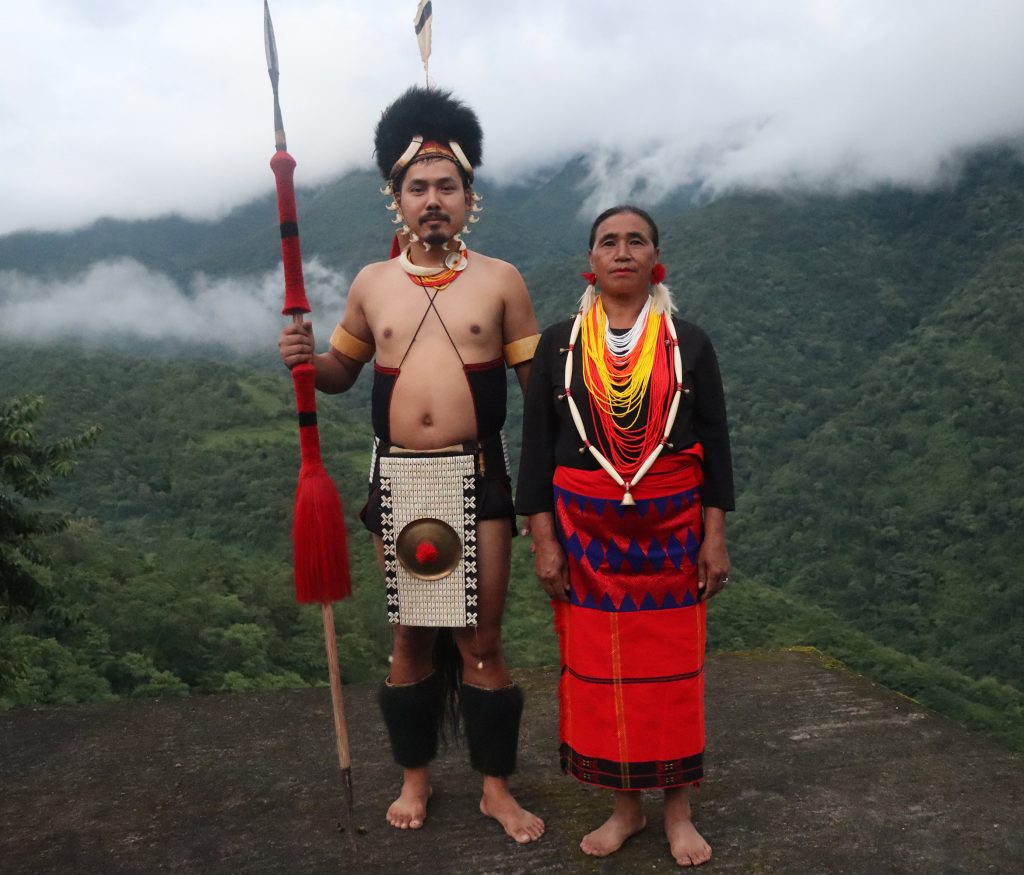
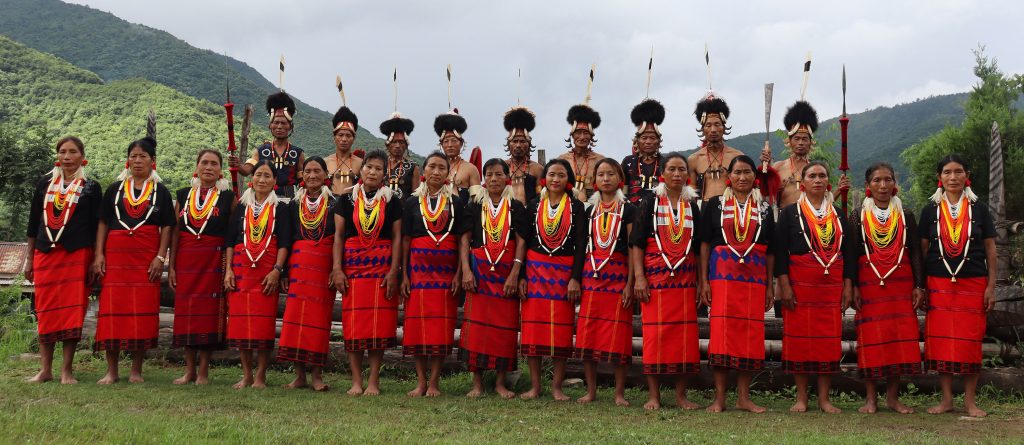
The second is known as “youjem”, on this day the friends and families go around the village sharing cooked meat and the steamed biscuits. The day is then celebrated by playing various games such as top(yan) spinning for men and box beans (wii) display for women. The women plays a particular bamboo crafted musical flute known as “Kongkin” and is followed by a meat eating competition.
The third day “Nakseeng” is culminated by clearing up the pavements and footpaths around the entire village and also the entire men folks gather to clear the paths leading to their fields .
Garo
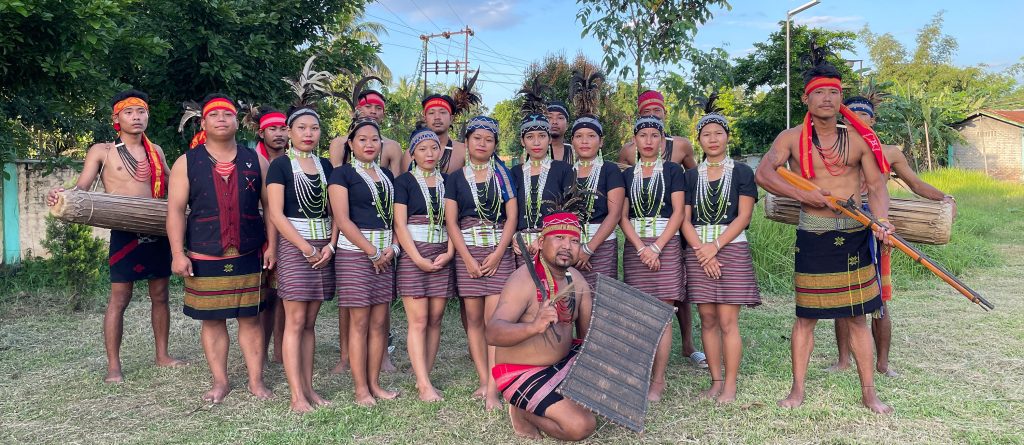
Wangala is a post-harvest festival celebrated by the Garo tribe of Nagaland, honoring Misi Saljong (also known as Pattigipa Ra’rongipa), the sun god of fertility, for blessing the community with a bountiful harvest. The festival takes place every year on November 21st, as designated by the government of Nagaland, with various villages gathering at a central location for the celebrations.
Traditionally, Wangala is observed for two to three days, featuring a wide range of activities such as sports, food, and cultural performances. These festivities aim to preserve the ancient heritage of the Garo tribe while connecting younger generations to their cultural roots. During the festival, people of all ages wear colorful garments (Dakmanda or Gando) and elaborate feathered headgear (Do’me) while dancing to the rhythm of long, oval-shaped drums (Dama).
As the Garo people rely on agriculture for their livelihood, they abstain from consuming any crops before first giving thanks to Misi Saljong. The festival is marked by dancing, singing, and drinking chu (a rice beer fermented for seven years). Various traditional dances, such as the Wangala dance and Rugala, are performed by different villages. Indigenous games like Budu Sala (Tug of War), Ro’ongdea (stone lifting), Makal Pala (wrestling), and Wapong Sika (bamboo pole pushing) are also organized.
On the first day of the festival, rituals like Rugala (pouring rice beer) and Sa’sat So’a (incense burning) are performed by the priest, known as the Kamal, inside the house of the Nokma (chieftain). These are followed by the beating of traditional gongs (Rang), dancing, and festive merrymaking.
Kachari Tribe
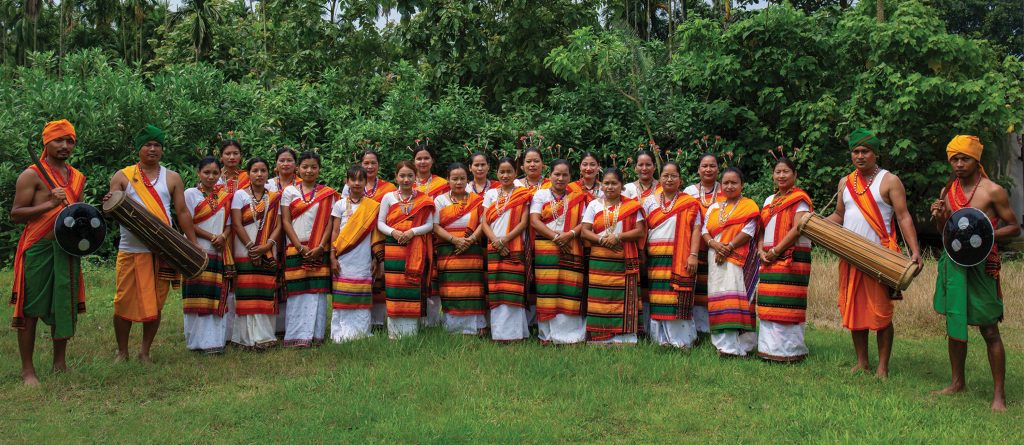
Festival : Bishu Dima
Date of Festival : 27th January
District : Dimapur
The Bishu Festival of the Dimasa Kachari is essentially a post-harvest festival celebrated annually after all the hard earned food grains are harvested, thrashed and stored in the grannies for yearlong home consumption. The Dimasa Kacharis celebrate Bishu in three different ways viz (i) Hangseu Bishu, which is celebrated for seven days in a stretch. (i) Suren Bishu is the second type which is celebrated for three days. (iii) Jitab is the third type which is celebrated for only one day. During these festivas many competitions like traditional dance, Muri (traditional flute), singing and traditional games are held.
Khiamniungan
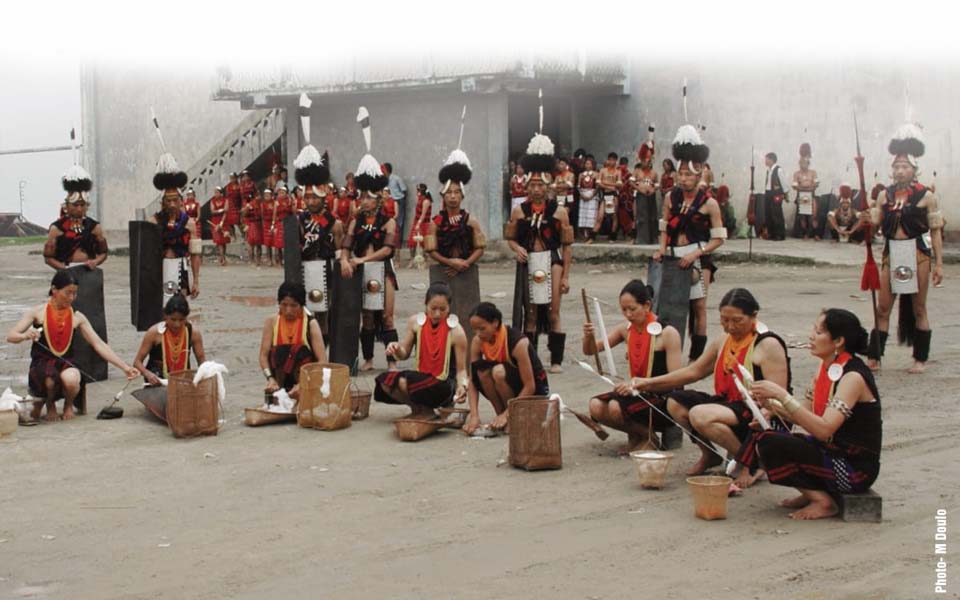
Festival: TSOKUM FESTIVAL
Date of festival: 5th October
District: Noklak
Tsokum, the festival of festivals is celebrated by Khiamniungan Naga. It falls in the month of October often full moon every year in the agriculture calendar, which has immense impact in the socio-religious life of the people. The celebration takes eight days marking the harvest in new Jhum fields. Harvest is forbidden till the festival is ended to ensure the effectiveness of prayer for prosperity, good health and communal wellbeing. Wealthy families slaughter buffalo or mithun, hosting feast of merit. Prayers and rituals are performed in the fields followed by community meals featuring pork, beef and rice beer, shared with relatives and neighbours (once the Tsokum is over, a man who has attain the age of marriage can look for the bride to marry). Tsokum represents the unity, cultural heritage and agricultural prosperity of the community, while invoking blessings for the health of both people and livestock.
Konyak
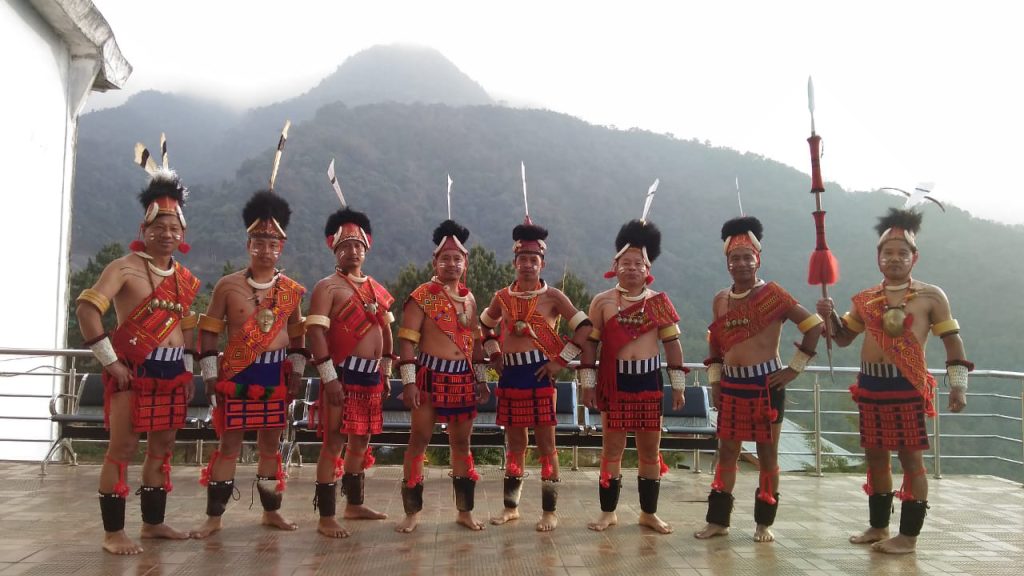
The Konyak Nagas of Nagaland celebrate the Aoleang Festival in April to mark the end of the old year and the arrival of spring, seeking blessings for a bountiful harvest. The festival lasts six days, each with its own significance:
- Hoi Lai Yah Nyih (Preparation Day): The community prepares for the festival, gathering firewood, food, and rice beer. The head of the family sacrifices a chicken to seek blessings for the harvest.
- Yin Mok Pho Nyih (Animal Tethering Day): Domestic animals are captured for sacrifice, and young boys undergo symbolic “head-hunting” rituals in the jungle.
- Yin Mok Shek Nyih (Animal Sacrifice Day): The festival officially begins with the hoisting of a bamboo flag. Young men sacrifice animals and bring the meat home.
- Lingnyu Nyih (Feasting and Dancing Day): People gather for feasts, wear traditional clothes, and engage in dancing and singing. Men also teach young boys the art of head-hunting.
- Lingha Nyih (Honoring Day): Young people honor the elderly, visit the graves of ancestors, and exchange food with friends and family.
- Lingshan Nyih (Cleaning Day): The final day is spent cleaning homes and the village, concluding the festival.
Through Aoleang, the Konyak Nagas celebrate their culture and pray for prosperity in the coming year.
Kuki Tribe
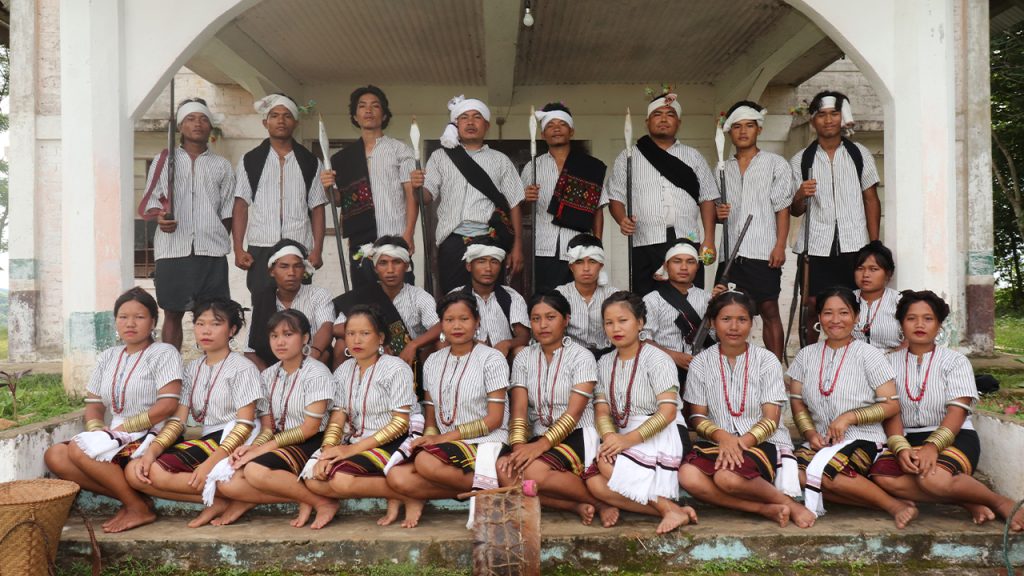
- Main festival : Mimkut
- Period : 17th January
- District : Peren
- Kuki Morung : Kuki In
The Kukis of Nagaland are one of the Indigenous tribes of the state inhabiting the Ahthibung Sub-division of Peren District and Medziphema Sub-division of Chumukedima District.
Kukis have a very rich culture and for them life is a celebration to shared with others! The Kukis celebrate two main festivals, Mim Kut and Chavang Kut. Kuki folk songs eloquently portray the heroic chronicles and folklores of their revered Warriors, Heroines, Epics and other events, which depict the timeless tales of eternal romance within their cultural milieu.
Mim Kut is the post harvest festival celebrated on the 17th of January, deriving its name from the last harvest crop “MIM” (Job’s Tears). The Thempu (Priest), expressing exhilaration and triumph, sacrifices fowls and performs rituals to thank the Chung Pathen (Supernatural God) for the bountiful harvest.
Chavang Kut is observed on the 1st of November marking the end of harvesting season. The Thempu performs rituals, thanking the Deities for good harvest, distributes JU (Rice Beer), followed by dancing, singing folklores along with traditional games and sports and feasts.
Suh Tah Lam (Bamboo Dance) is one of the chief dances, also practices by other kindred tribes outside the state. The intricately made musical instrument Gosem (Bamboo-pipe organ) perfectly represents the beauty and richness of Kuki culture, besides other musical instruments like Selangdah, Pengkul, Dahpi, Dahcha, Khongpi etc..
Lotha Tribe
The Lotha Tokhϋ Emong, is traditionally a Post-Harvest Festival of Thanks giving, Reconciliation, Unity and Forecasting. The Village Chief (Pvϋti), invites all the Chϋmpho- ramo e (leaders of the Dormitories) and its members, and In the midst of the gathering; the Chief launches the Tokhϋ Emong, by announcing the dates and the rituals required to be performed by all. Launching of Tokhϋ Emong, by the Pvϋti, is followed, in like manner by all the Chϋmpo leaders and thereby the whole village start to observe the rituals of Tokhϋ Emong. The main targets of Tokhϋ Emong are Thanks-giving; for the blessings during the passing year, Reconciliation and fostering unity, among the villagers, and forecasting the nature of the coming next year. The forecasting is done by performing Rituals, by way of total halt of outdoor works, restriction of entry by outsiders, non indulgence into desires of the flesh, prayer etc . The theme of Tokhϋ Emong is “SENJṺMTA” meaning “Reconciliation and unity”.
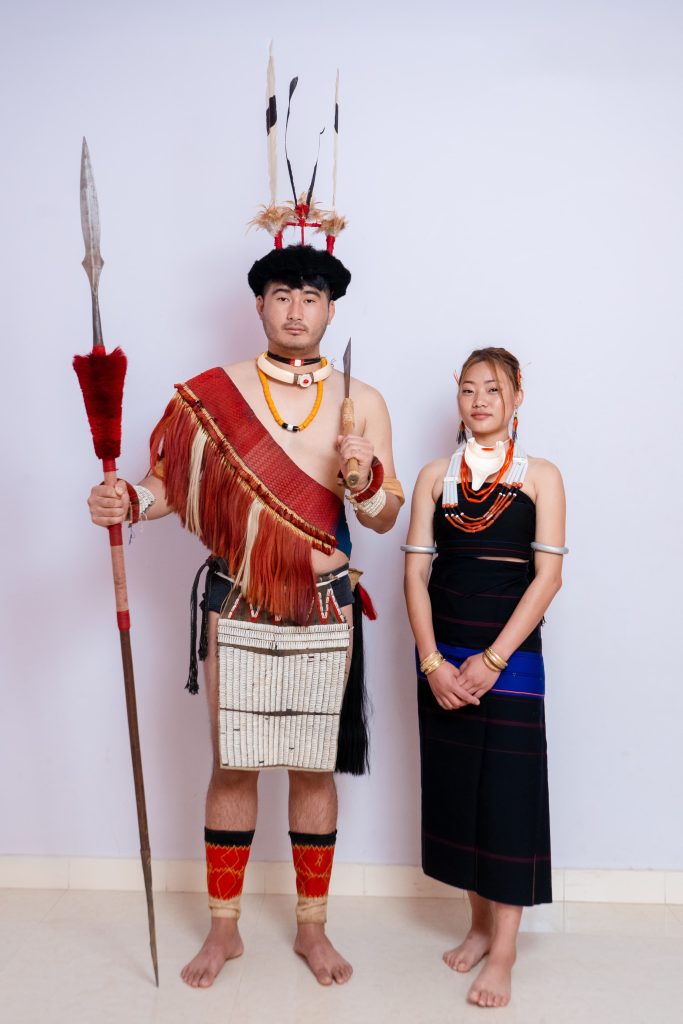
Phom
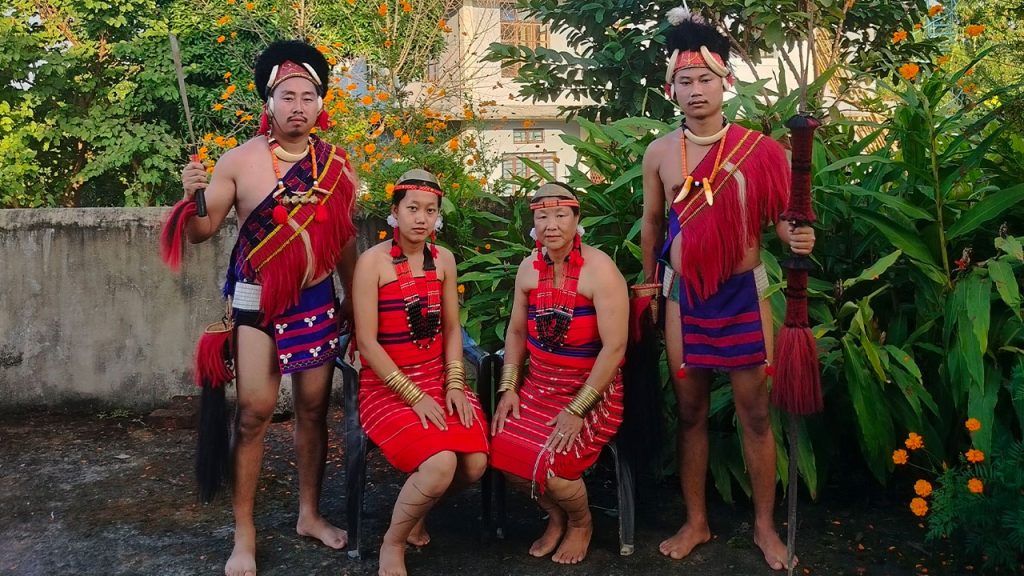
The Phom Monyu festival is originally celebrated for 6 days beginning 1st to 6th April every year. This is a Spring festival normally observed after the sowing is done in paddy fields. This is to invoke God’s blessings to have a bountiful harvest. Monyu also marks the end of winter and the onset of the monsoon season. Traditionally it is also a time with relatives, friends and in-Laws by the exchange of gifts rice beer meat and various food items and also by making merriment wealthy ones and warriors also exhibited social status also by dressing and family members with unique attire during the Monyu festival.
Pochury
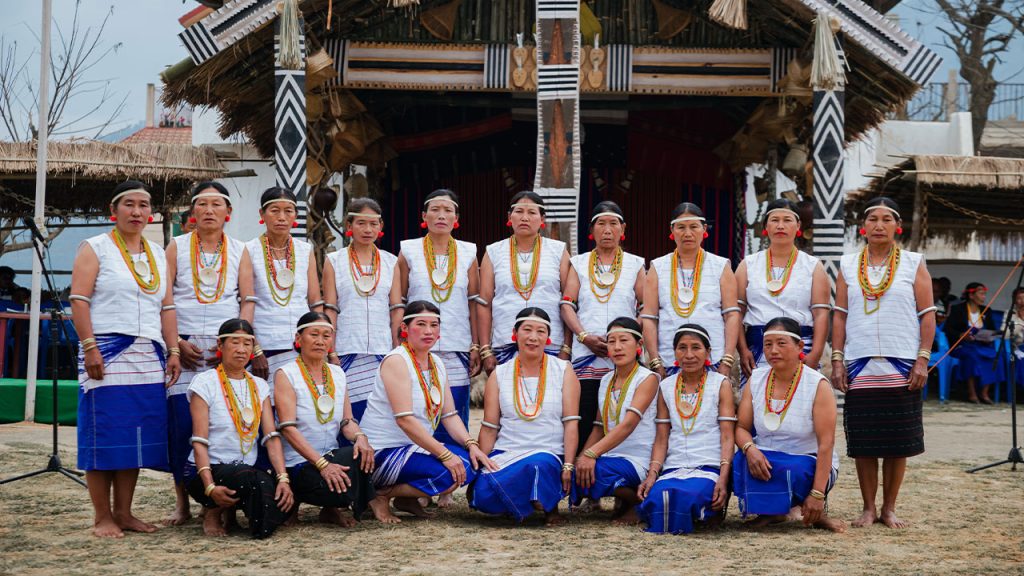
- FESTIVAL: YEMSHE
- DATE OF FESTIVAL: 5TH OCTOBER
- DISTRICT: MELURI
Yemshe, a premier festival of Pochury tribe which is celebrated on the 5th of October every year, marks the welcoming of the new harvest and seeks blessings for a bountiful year. The entire community participates in the festivities, which include rituals, feasts, and celebrations. YEMSHE literally means “aroma of the house” is derived from the word “DH YEM” (house, granary) and “L SHE” (sweet aroma).
Preparations for Yemshe involve village cleaning, ritualistic offerings, and social gatherings. Engaged couples renew their relationships and many young people find love during this time. The highlight is the “sanctification feast,” hosted by a selected family. The host must provide food, wine, and entertainment for the entire village.
The festival culminates in a grand feast, where everyone gathers to celebrate and enjoy traditional delicacies. After the feast, the village begins harvesting, marking the start of a new agricultural cycle. The Yemshe festival is a significant event for the Pochury community, fostering unity, gratitude, and cultural preservation.
Rengma
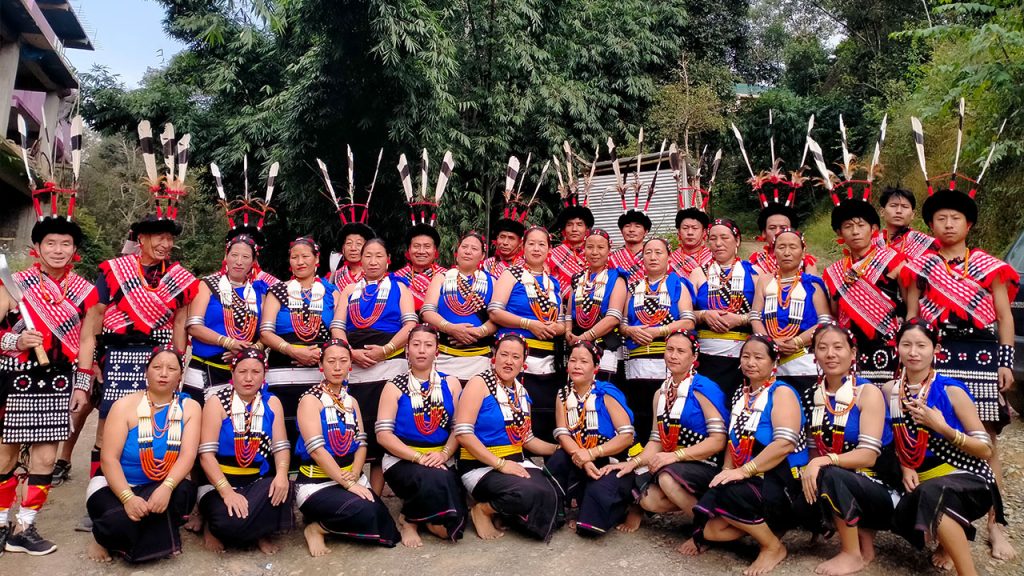
- Name of Festival : NGADA
- Date of Festival : 27-28 November.
- District : Tseminyu.
The Rengmas have a number of seasonal festivals in connection with their cultivation. Among them Ngada is the biggest, grandest, longest and the most colorful of all the festivals. The word Ngada means Nga- merry making and Da – big, in other word it means rejoicing and merry making.
Ngada is a festival of thanks giving for all the blessings received during the year, and is celebrated at the end of November every year by the Rengmas after all the harvested grains are brought home. It is a festival for feasting, dancing, singing, rejoicing, merry making and amusement. As it is a feasting festival in a year, the villagers eagerly look forward to the celebration of this festival and none of the villagers would miss it in the olden days. Rice beer and meat are the main food of Ngada. Ngada is an occasion to forgive and to forget one another and thereafter to rejoice together,
Sangtam
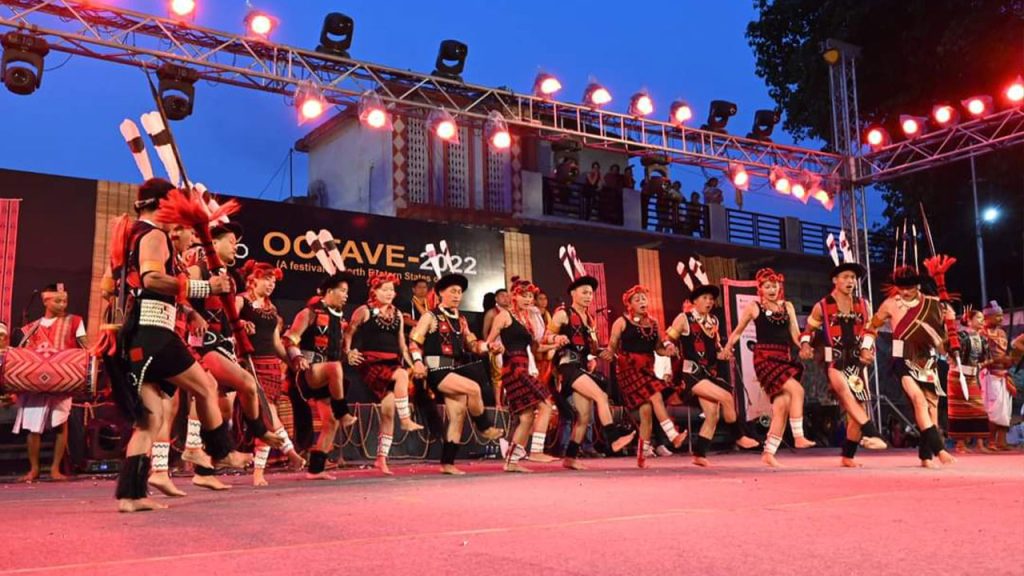
Out of many festivals observed by the Sangtam Nagas, the Sangtams considered Mungmung as the most important festival which is celebrated on the first week of September every year. The word Mungmung means, ‘togetherness forever’ and it is celebrated from 1st -6th September, annually. The festival revolves around prayers, rites, folksongs, dances, feasting and the exchange of gifts.
It is the community pre-harvest festival and the festival is a symbol of ending hard work and starting new harvest for bountiful harvest by worshipping god of the house and three cooking stones in the fire place. The festival is celebrated to seek blessings of their god for good health and prosperous harvest after a year-long hard work. Traditionally it is Six-Day long festival with each day having its own traditional values and rituals. It also signifies the separation of the spirit of dead person and the living being. Thus, a line is drawn between the dead and the living. After observing all the rituals from day one to fifth, on the sixth day the harvesting of new crops begins.
(i) Jangshika– meaning, the last day for the field work. The day is marked by closing of all transactions relating to the purchase of domestic animals. The villagers engage themselves in arranging life stocks, rice, special wine or rice beer and other food provisions for the entire six long day celebration. On this day the male members slaughter animals for the feast.
(ii) Singkithsa– The second day of the festival is called Singkithsa, meaning collection of fire woods. The villagers engage themselves in collecting sufficient fire woods and stock up for the entire Mungmung celebration. On this day every clan will slaughter a healthy pig for the ceremonial offering of the three oven stones.
(iii) Müsüyangtüp– On this third day, early in the morning the eldest women in the family will perform the “Müsüyangtüp” ritual in her house. The eldest woman first of all, cleans up the fire place and new fire is lightened. After this she will cook sticky-rice, meat etc. and before anybody has eaten anything, she will feed the three oven-stones by placing a small amount of cooked rice and meat on top of stones believing that the God (Lijaba) is represented by these stones. Until the ritual is completed, nobody in the house is allowed to taste the food, and even animals are not fed.
(iv) Kikhalangpi– on the fourth day, “Kikhalangpi” is the day to clean and clear the path leading to the village pond. Keeping to the customs of forefathers, the most resourceful and self-reliant person in the village had to lead the male youths for this social work. It is also a day of special gathering and feasting where they reaffirm their mutual friendship.
(v) Shilang Wüba Nyümong– Fifth day, the day is marked by visitations and entertaining amongst friends by indulging into drinking of rice beer.
(vi) Akatisingkithsa– The last day is called Akatisingkithsa. On this day a certain leave known as Throngba (a stinging plant) is placed on the walls and the roofs of the house. They believed that the plant will sting away evil and diseases.
On successful completion of the sixth day celebration, the Sangtam folk believed that their God is well-pleased and hope for blessing from him to have rich harvest and good health in the family.
Sumi
Tuluni is the festival celebrating the season of abundance and plentiful, it is observed
to seek protection of crops where prayers are offered to the deity “LITSABA” who
is considered the giver of fruitfulness. The event is also called “Anni” which means
the season of plentiful crops. Another main feature of this festival is the exchange
of gifts and hosting of feasts between betrothed couples and their families.The
festival is also associated with peace –making and reconcialiation.
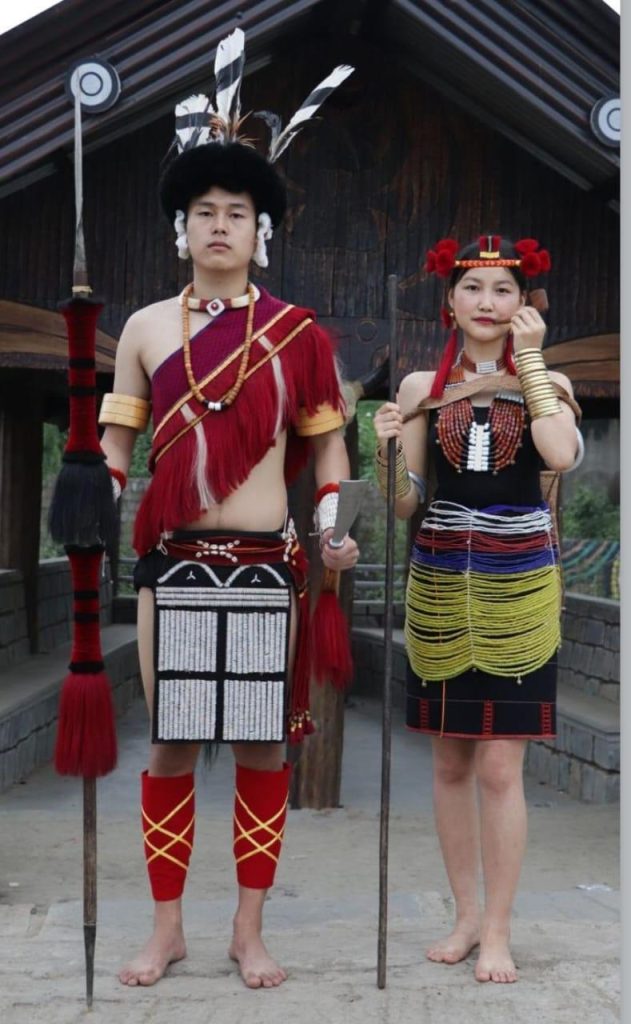
Tikhir
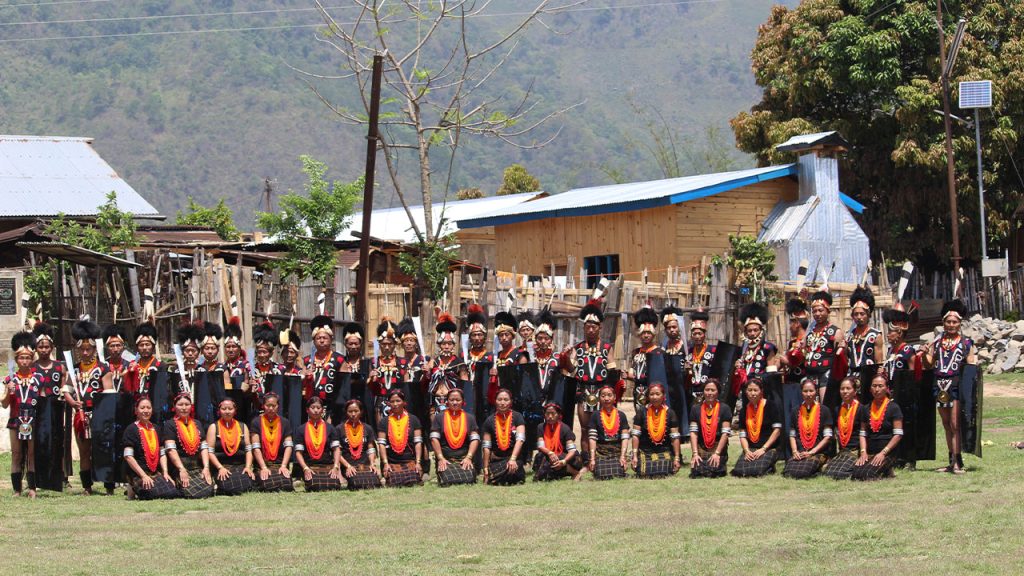
Tsonglaknyi is one of the main festivals of Tikhir tribe celebrated each year from 9th to 12th of October. The word Tsonglaknyi is basically derived from three words namely ‘Tsong’ meaning ‘Shield’, ‘Lak’ meaning ‘Sanctification’ and ‘Nyi’ meaning ‘festival’. It is therefore, the festival for Sanctification of Shield. This festival was mainly for men folks observed during the head hunting age.
During this festival, on the first day, men folks would wake up early in the morning and take bath so that evils are washed away. They do the yodel and get ready for slaughtering the festival meat especially pig. Eldest men in the village/khels would gather at the morung and prepare the sanctified rooster which is meant to be consumed by elders only.
Second and third days witness celebration all across the khels/village. Elders would share their valor and bravery legacies to the young boys. It is filled with merry making and folk songs.
The last day of celebration is marked with Sanctification of Shields and weapons. A rooster is killed and it’s heart is cut into pieces so that it is spelled upon the weapons to identify the valor while readying for the war.
Today, this festival is celebrated by young and old, men and women as they prepare themselves to enter the year long harvest.
Yimkhiung
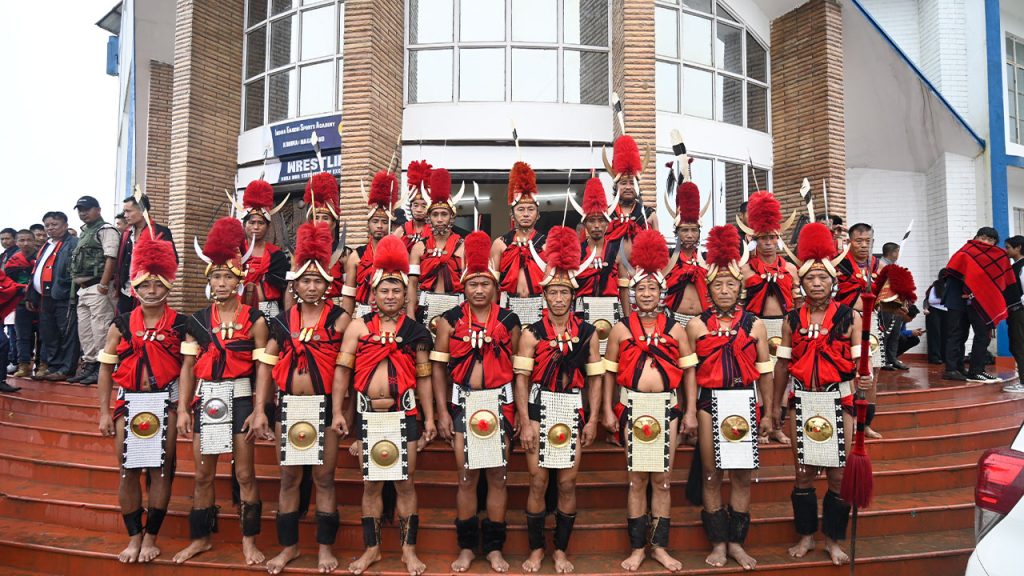
| Sl.No | Name of Festival | Date & Month | District |
| 1 | Tsüngkamnyo Festival | 15th– 17th January | Shamator, Kiphire , Niuland |
| 2 | Metümnyo Festival | 6-8th August | Shamator, Kiphire , Niuland |
| 3 | Wünthsünyo | March | Shamator, Kiphire , Niuland |
Brief description of Main Festival:
- TSÜNGKAMNYO
Tsüngkamnyo the post-harvest festival is celebrated on 15th – 17th January annually. The Nyo-do-Nyo or Tsüngkam Nyo is originally and traditionally the most significant, important and major of all festivals of the Yimkhiung Nagas. NyodoNyo means the big/main Festival and Tsüngkam means “winter” Nyo “festival” as it was/is traditionally celebrated and observed during winter i,e January as in this case. It is however, not in honour of the season, but because of the time and space coinciding with the season in terms of the post-harvest and pre-activities which are mainly agro-based. Preparations are made months ahead which involves a lot of Traditional and Customary practices. It is/was mainly during this festival that one most honored and well-known practices of the Traditional “Feast of Merit” was practiced and given within, amongst and between Village to Village and Tribe to Tribe. The festival involved a lot of feasting, drinking, singing and dancing of the best of the choicest, including giving gifts which were expensive, priceless and exotic. It was during this festival that friendship and relationship were honoured and where Peace Treaties between warring individuals and groups were made. Therefore, it was in a sense a festival of Thanks Giving of bountiful harvest and blessings of livestock and other good fortunes, Social-Cultural and besides, very significantly, Socio-Political as well.
- METÜMNYO
Metümnyo falls in the first week of August i.e 4-8th every year coinciding with the harvest of millet. Basically, it was a festival instituted in honor of the departed souls with the special prayers offered for them.
The word ‘Me’ means soul ‘tüm’ means wrap ‘nyo’ means festival. Thus, the literal translation and meaning of Metümnyo is correlated to bidding good bye to the souls departed during the past one year. In this sense, it is a very sentimental ceremony for those whose dear ones left for their heavenly abode in the recent past. The festival is spread over five days and each is given a name, i.e. Shito, Zhihto, Zümto, Khihresuk and Shiresuk. An elder of the village known as ‘Kiuzhirü” (Announcer) after due prayers inaugurates the festival. Once inaugural ceremony is over, no one is allowed to go out of the village on a journey. If someone does so, it is considered to be inviting the wrath of the spirit and a misfortune would be imminent on the village.
An important element of Metümnyo is the welcome ceremony for the new born babies of the past one year. As a symbol of acceptance of the new members to the tribal family and the world at large, the infants are offered a bowl of rice with six pieces of meat for male child and five pieces for female child. The numbers are significant and are indicative of the belief that a male child has six souls and a female has five souls. This is a foundational belief. Many practices of faith are connected to its. For instance, they hold the naming ceremony on the sixth day for a male child and on the fifth day for the female child.
It is significant that the feast is observed after the harvest of millet. This brings to mind that the poor also have their fill at the time of the feast, indicating the equality of the rich and the poor. The feast is a time of renewal and reenergizing. The festival days are marked for the acts of forgiveness and reconciliation. The spirit of festival demands that those in enmity should settle their contention as children of one family. It is during the time of the merry making that past mistake are openly discussed and forgiven. On the whole, the festival speaks aloud the philosophy of human life in Yimkhiungrü perspective. This festival lays bare the fact of human mortality, which is the basic reality of human life. The festival brings home to every Yimkhiungrü this universal truth which is inherited from the fore fathers. The traditions and practices of Metümnyo built around the death and birth of human beings, are acts of ‘fare-well’ and ‘welcome’ filled with the profoundest philosophical and realistic view on human life by the forefathers.
- WÜNTHSÜNYO
The prefix “Wün” means the ‘farm Hut’ and the suffix “Thsü” and “nyo” means ‘to construct’ and ‘festival’ respectively. Therefore, Wünthsühnyo in connotes an occasion for the construction of the farm house before the sowing of seeds. The conclusion of festival is followed by the observance of Mude-a-mongkhi. The subsequent day, all the members of the village would set out to sow the first seeds of the year.
Zeliang
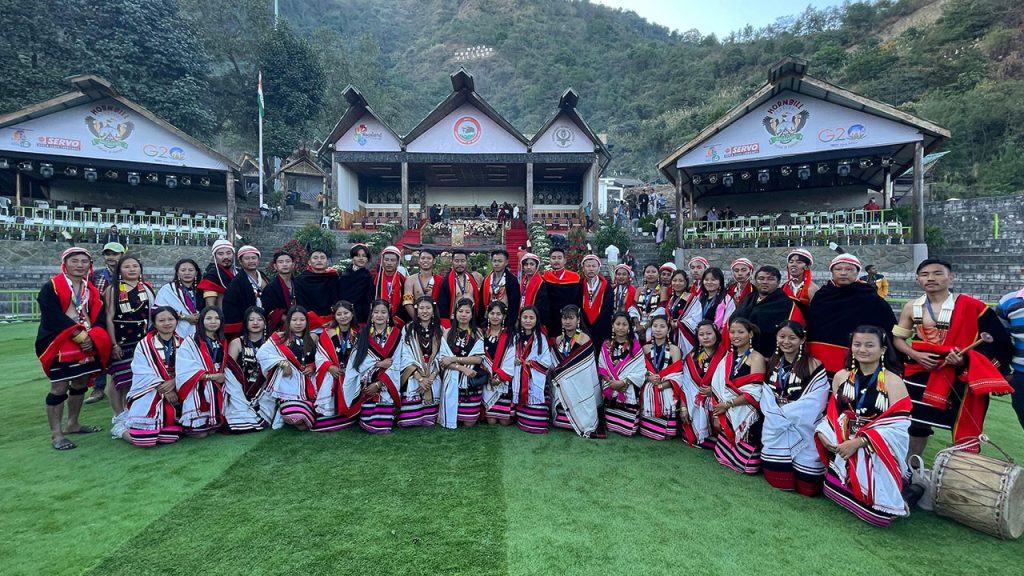
- Festival : Chaga Gadi (Liangmai)/Lamsimngyi (Zeme)
- Date of Festival : 30th & 31st October
- District : Peren
Chaga Gadi in Liangmai terminology is the Blessed Festival of thanksgiving celebrated after the harvest with twin significance for five days. Firstly, it is about honouring the womenfolk for complementing the life of the menfolk, and also blessing the unbetrothed young girls for their prosperous future, allowing them complete rest and treating with delectable feast called Aliukuangkan. The other significance is self purification by menfolk called Aliambo, compulsorily requiring them to observe strict abstinence from physical indulgence and relationship with female in order to sanctify themselves for good fortune in the coming year.
Preparation for the festival commences by scorching paddy to make wine (Zau) on the twenty-sixth day in the tenth lunar month of the year called Chagahiu (October). Each of these days has been counted by wittingly cutting a notch called Charipa on a wood lath observing the new moon as it waxes and wanes. The paddy will then be pounded on the next day and left till the following day for fermenting (Matin). By the twenty-ninth day, the sanctification ritual will entail menfolk to make fresh fire in a traditional way called Chami Malabwangbo from the Morung and taken home to cook food for themselves with fresh water fetched with no womenfolk involved in all of their affairs. The next day is the beginning of the festival and will continue for five days. The major event on this Chaga Gadi day is a fortune try-out spearing of a moon personified totem pole called Npeng which will be prepared out of an exclusively selected tree trunk by one of the Morungs in the village whose members do not have any death in their family during the year. Npeng will have depictions marked with liquefied soot as: 1. Tathiu Chari Rengbung-Warfare; 2. Akhang Aliu Rengbung Romance; 3. Tatien Rengbung-Wealth; and 4. Kakhung Rengbung-Sickness. The Npeng will be positioned by a priest at the southern gate of the village declaring for spearing it by all menfolk saying, “Misfortune befalls whoever spears my Npeng inadequate to match up my feats.” On the northern gate replica of two Hornbills will be placed.
Spearing of the Npeng will ensue after the menfolk en masse marched up and down the extent of the village uniting in mob howling and finally accomplishing their objective to strike the demarcated depictions. That night the moon is expected not to rise again, and if so, whatever one had wished during spearing the Npeng is supposed to come true and it will be called Gasui. This will be followed by athletic events of Long jump and Shot put. The winner of the events will experience the ordeal of getting his loin cloth stripped in public by one of the village elders and a blessing chanted upon him which is regarded as the highest honour. At this occasion, either the sisters or aunts will instantaneously clothe him with new garment proving the affluence of their family. The winner also will be generous enough to provide meat for his Morung to celebrate the victory. Cultural dance will follow the athletic events. All male members adorned in their finest traditional dresses shall gather and march the length and breadth of the village which is called Chariutaobo. On the next day again, all menfolk in their best traditional attires will stride out round the whole village participating in the Chariutaobo march and dance wherever there is any sizeable space. They will also go in to the neighbourhood of the girls Morung and dance wherein even girls will join them in the dance.
The third day of the festival is the last day of abstinence called Aliamta bonai. The menfolk will throw away all their traditional Chaga bamboo cups and plates. There will be future foretelling event on this day called Tadin Mataibo. On this day the girls will give feast to the males from their Morungs. These festive feasting and merrymaking will continue for two more days extending to the fourth and the fifth day. The sixth day, the aftermath of Chaga Gadi is a kind of contribution and charity endeavour. The leftover dishes will be shared and distributed to the poor marking the finale of the blessed Chaga Gadi festival. On this day, the emblematic Npeng will also be taken down from its position portraying the ring down of curtain on Chaga Gadi festival of the year.
2. LAMSIMNGYI (Zeme)
Lamsimngyi is one of the most popular festivals of the Zeliang tribe of Nagaland which is celebrated with great pomp and gaiety, usually during the last part of October or early November. Lamsimngyi was declared as a Zeliang restricted holiday by the then Deputy Commisssioner of Kohima, Shri. S.C Dev while gracing the festival as Chief Guest at Benreu village on 31st October, 1966. Accordingly, the 30th and 31st of October became a restricted holiday for the Zeliang tribe on account of Lamsimngyi and Chega-Gadi.
Lamsimngyi or kwakpwa Ngyi is basically a festival of rekindling of the loving relationship between parents and married daughters/families of sons; between families of sisters and brothers; and between families of married nieces and the chosen maternal uncle’s family. It is also a festival of games and sports competition for the boys/youths.
On the first day, every household cooks the best delicacies and share it with each other’s families which is called kwakpwa and hetamram. In some villages, the first day belongs to the about-to-be brides who gather and spend the day and enjoy the day together for the last time before finally turning into a woman in wedlock. Also, the first day is for the other women folks who gather according to their age groups and enjoy the day in each other’s company, while the men folks looks after the house-hold chores and takes care of the children.
The second day belongs to the young boys and men who compete in various games and sports. On this day, at sunrise boys and men gathers and make ululating sound in unison and competes in throwing tambau (A unique form of competition where men folks tries to throw tambau as far as they can, similar to throwing spears). In the run up to the games and sports competition, the young boys and men of different clans form groups and take turns to feed each other with fresh cooked meat before they partake in the games and sports. Some of the games played on this day are Nsau (Leaping competition), Hezwa (Long jump), Heram (High jump), chugi (Shot put) and hepwa (Wrestling). The champions in the different disciplines are looked upon with great respect by all the people and they are considered as persons capable of guarding the village as abled and brave warriors.
